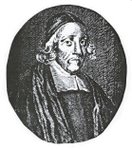Thesis 02 Ernst
ERNST, Charles Albert Scheuringer
Contextualizing the character: Generic studies of text and canon, rhetoric, style and quantitative analysis in the seventeenth century English prose character.
(Diss. University of Pennsylvania, 1988)
Abstract: The intent of the study is to contextualize the seventeenth-century English prose character as a significant object of critical inquiry through the textual, generic, canonical, rhetorical, and stylistic traditions informing it. Moreover, the first quantitative analysis of the character's structure and (prospectively) of its style aims at a generic "modeling" of the character by the enumerative inventories of descriptive statistics. Chapter One places character studies within contemporary theory and criticism.
Chapter Two considers the economy of texts in publishing records of character books by Joseph Hall, the Overburians, John Stephens, Nicholas Breton, John Earle and Richard Brathwait, and provides an updated survey of scholarship on the character.
Chapter Three clarifies, against the background of type charactery, the "universe" of characters forming the canon of the "charactering" genre by surveying texts from 319 BC (the Theophrastan sketches) to 1710-12, a terminus ad quem accommodating later criticism of the character's style.
Chapter Four shows how type charactery was preserved through rhetorical instruction from classical antiquity to the Renaissance in treatments of epideictic oratory, decorum and figures of characterization and description, culminating in the eventual transmission of character-writing into the English grammar school curriculum by the hitherto unacknowledged influence of Joshua Poole's English Parnassus (1657), along with Ralph Johnson's frequently cited Scholar's Guide (1665).
Chapter Five inscribes the character within the linguistic history and stylistic development of Renaissance England by establishing the "charactering" style as a variant of Baroque prose and, more parochially, of English Senecanism, with attention to the latter's stylistic relation to Euphuism and to the hybrid style of Thomas Adams' characters.
Chapter Six provides the first quantitative study of the character's structure by systematically analyzing six complete textual populations (by Hall, the Overburians, Stephens, Breton, Earle and Brathwait) to obtain a census of numerical data establishing a normative range of values for selected structural components.
Chapter Seven considers the character as a quantitative model of English Senecanism by theorizing the basis for a stylo-statistical profile of character-writing from a numerical census of syntactic variables in complete populations.
Chapter Eight summarizes all findings.
(Diss. University of Pennsylvania, 1988)
Abstract: The intent of the study is to contextualize the seventeenth-century English prose character as a significant object of critical inquiry through the textual, generic, canonical, rhetorical, and stylistic traditions informing it. Moreover, the first quantitative analysis of the character's structure and (prospectively) of its style aims at a generic "modeling" of the character by the enumerative inventories of descriptive statistics. Chapter One places character studies within contemporary theory and criticism.
Chapter Two considers the economy of texts in publishing records of character books by Joseph Hall, the Overburians, John Stephens, Nicholas Breton, John Earle and Richard Brathwait, and provides an updated survey of scholarship on the character.
Chapter Three clarifies, against the background of type charactery, the "universe" of characters forming the canon of the "charactering" genre by surveying texts from 319 BC (the Theophrastan sketches) to 1710-12, a terminus ad quem accommodating later criticism of the character's style.
Chapter Four shows how type charactery was preserved through rhetorical instruction from classical antiquity to the Renaissance in treatments of epideictic oratory, decorum and figures of characterization and description, culminating in the eventual transmission of character-writing into the English grammar school curriculum by the hitherto unacknowledged influence of Joshua Poole's English Parnassus (1657), along with Ralph Johnson's frequently cited Scholar's Guide (1665).
Chapter Five inscribes the character within the linguistic history and stylistic development of Renaissance England by establishing the "charactering" style as a variant of Baroque prose and, more parochially, of English Senecanism, with attention to the latter's stylistic relation to Euphuism and to the hybrid style of Thomas Adams' characters.
Chapter Six provides the first quantitative study of the character's structure by systematically analyzing six complete textual populations (by Hall, the Overburians, Stephens, Breton, Earle and Brathwait) to obtain a census of numerical data establishing a normative range of values for selected structural components.
Chapter Seven considers the character as a quantitative model of English Senecanism by theorizing the basis for a stylo-statistical profile of character-writing from a numerical census of syntactic variables in complete populations.
Chapter Eight summarizes all findings.








No comments:
Post a Comment